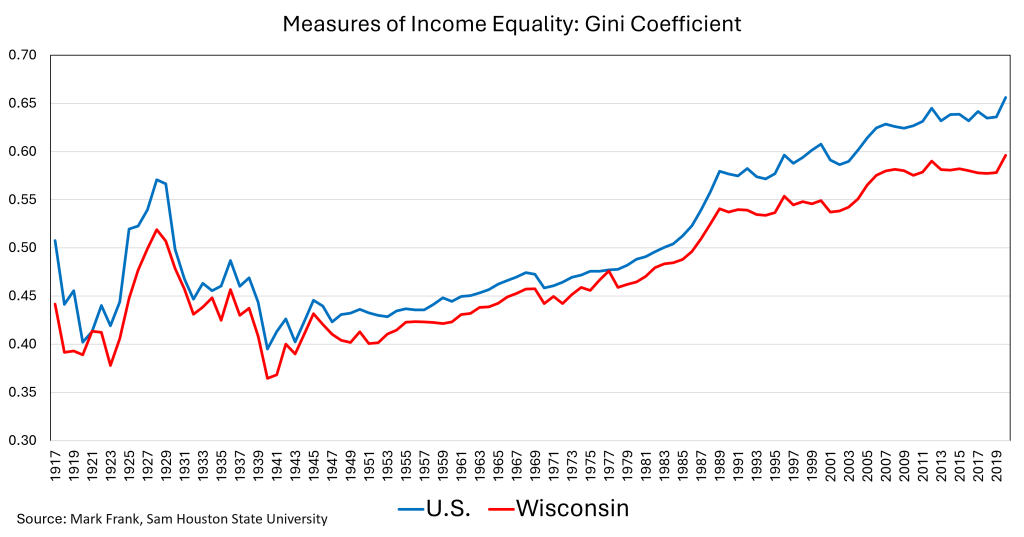(Image Source: Blogging Guide / Unsplash)
Wisconsin IDEA
Insight • Data • Economics • Analysis
Income Inequality in Wisconsin Lower Than the US But Rising Over Last 30 Years
In 2014, French economist Thomas Piketty published “Capital in the Twenty-First Century,” revitalizing the debate around income inequality. Concerns about how the benefits of economic growth are distributed across the population have been discussed for decades, if not centuries. The most common concern is that higher-income individuals benefit disproportionately from economic growth, with the benefits trickling down slowly to lower-income individuals. In other words, as the economy grows, the distribution of income tends to skew towards higher-income individuals.
One method economists use to track patterns in income equality or inequality over time is the Gini Coefficient of Income Equality. Created by Italian statistician Corrado Gini in 1909, the Gini Coefficient ranges from zero to one, where lower values (near zero) indicate a more even distribution of income, and higher values (near one) indicate a more unequal distribution. A Gini Coefficient of one represents a “king’s economy,” where all income flows to a single individual.
Figure 1. Measure of Income Equality: Gini Coefficient, US and Wisconsin, 1917-2020

Using data compiled by Mark Frank at Sam Houston State University, we can track the Gini Coefficient for Wisconsin relative to the U.S. from 1917 to 2020. Two key observations emerge from this analysis. First, Wisconsin’s Gini Coefficient has historically been lower than that of the U.S., indicating that income distribution in Wisconsin is generally more even. Second, following the instability of the Great Depression and WWII, the Gini Coefficient has been trending upward over the last several decades, highlighting concerns about rising income inequality across the U.S.
Beyond these broad patterns, several modest trends warrant discussion. First, there was a surge in income inequality starting in the mid-1980s, generally associated with the policies of the Reagan Administration. The extent to which Reagan’s policies caused this rise in inequality remains debated among economists. Second, since about 1990, Wisconsin’s Gini Coefficient has increased slightly slower than the U.S. average. While the data for Wisconsin points to rising income inequality, the Gini Coefficient does not provide insights into the economic well-being of lower-income individuals, such as patterns in poverty rates. It could be that the economic well-being of all individuals has been rising over time, but the distribution of that increase is uneven.
Moreover, research suggests that results can be sensitive to how income is measured. For example, does one use before- or after-tax income? How are transfer payments, such as unemployment insurance, treated? How does one account for wealth as opposed to income? Regardless of how these technical issues are addressed, the overall conclusion of rising income inequality is widely supported. The next natural question is what are the implications of rising income inequality.













